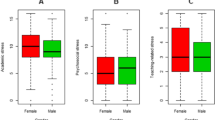Abstract
The complexity of science teaching requires science teachers to encounter a range of tasks. Some tasks are perceived as stressful while others are not. This study aims to investigate the extent to which different teaching situations lead to different stress levels. It also aims to identify the easiest and most difficult conditions to be regarded as stressful conditions by science teachers. An occupational stress inventory of 25 items developed by Okebukola (1988) validation of the occupational stress inventory for science teachers. Science Teacher, was used to measure the science teachers’ stress level in science teaching. A four point Likert scale ranging from 1 – ‘no stress at all’ to 4 – ‘extreme stress’ was used. Fifty-eight Malaysian secondary science teachers participated in the survey in which six volunteered to participate in the interview study. The data was then analyzed using the Rasch model to measure the level of stress caused by different kinds of stressful conditions. Even though ‘overloaded science syllabus’ was identified to be the basis of multiple stressful conditions, it was, however, difficult for the respondents to regard it as a stressful condition. On the other hand, the respondents found that ‘having to teach difficult science topics’ is easiest to be regarded as a stressful condition. It was shown that even though ‘overloaded science syllabus’ is the starting point for stress caused by multiple conditions, due to the availability of coping strategies which can be employed by the respondents, the stressor is minor in causing stress among teachers. On the other hand, when teachers lack the availability of coping strategies dealing with teaching difficult science topics, they easily feel stressful. One of the main recommendations to overcome stressful conditions is to provide the science teachers ‘topic specific pedagogy’ during in-service training.
Similar content being viewed by others
References
Billingsley, B.S. & Cross, L.H. (1992). Predictors of job satisfaction, and intent to stay in teaching: A comparison of general and special educators. Journal for Special Educators, 25, 453–471.
Bond, T.G. & Fox, C.M. (2001). Applying the Rasch model: Fundamental measurement in the human sciences. Lawrence Erlbaum, Mahwah, NJ.
Helgeson, S.L. (1988). The second IEA science study: Data related to precollege science in the USA. ERIC/SMEAC science education project no. 2, 1–4.
Hoover-Dempsy, K.V. and Kendall, E.D. (1982). Stress and coping among teachers: experience in search of theory and science. Final report to George Peabody College for Teachers, Nashville, Tennesse, ERIC document no. ED 241503.
Kyriacou, C. (1987). Teacher stress and burnout: An international review. Educational Researcher, 29(2), 146–152.
Linacre, J.M. & Wright, B.D. (1994). Reasonable mean-square fit values. Rasch Measurement Transactions, 8(3), 370. http://www.rasch.org/rmt/rmt83.htm. Cited 7 October 2005.
Mcgee-Cooper, A. & Trammell, D. (1990). You don’t have to go home from work exhausted. Bantam, New York.
Okebukola, P.A.O. (1988). The development and validation of the occupational stress inventory for science teachers. Science Teacher, 3(8), 211–236.
Okebukola, P.A. (1992). The concept of schools village and the incidence of stress among science teachers. Human Relations, 45(7), 735–752.
Seok, B.C. (2004). Occupational stress, work satisfaction, and coping strategies: A study among teachers in Kota Kinabalu Sabah. Jurnal Teknologi, 40, 1–18.
Soyibo, K. (1994). Occupational stress factors and coping strategies among Jamaican high school science teachers. Research in Science & Technological Education, 12(2), 187–194.
Wright, B.D. (1984). Despair and hope for educational measurement. Contemporary Education Review, 3(1), 281–288.
Wright, B.D. & Masters, G.N. (1981). The measurement of knowledge and attitude (research memorandum no. 30). MESA Psychometric Laboratory, University of Chicago.
Zin, S.M. and Lewin, K. (1996). Insights into science education: Planning and policy priorities in Malaysia. Unesco, Paris.
Author information
Authors and Affiliations
Corresponding author
Rights and permissions
About this article
Cite this article
Halim, L., Samsudin, M.A., Meerah, T.S.M. et al. Measuring Science Teachers’ Stress Level Triggered by Multiple Stressful Conditions. Int J Sci Math Educ 4, 727–739 (2006). https://doi.org/10.1007/s10763-005-9020-9
Received:
Accepted:
Published:
Issue Date:
DOI: https://doi.org/10.1007/s10763-005-9020-9




